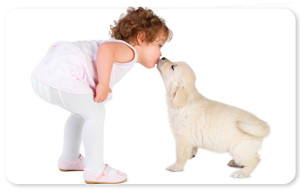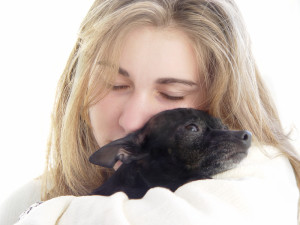 Education, Human-Animal Bond
Education, Human-Animal Bond  1 Comment
1 Comment The Dog Aid My Homework
Most kids love dogs, but not all kids love reading aloud. For some children, reading in front of adults or peers makes them extremely anxious or embarrassed, and can contribute to them falling behind in reading fluency — a very dangerous road to go down.
A student who can’t read on grade level by 3rd grade is four times less likely to graduate by age 19 than a child who does read proficiently by that time.
But again: most kids love dogs. So here’s where Ghost, a champion show dog and great listener comes into the story. Ghost’s owner Dawn Eliot-Johnson brings him to Harrison Elementary School every two weeks, where third and fourth-grade students read to him as he dutifully listens (and often sleeps) while curled up beside them. Ghost, along with many other dogs across the country perform this duty for kids who could use a bit of help reading aloud, and it’s not just a fun break from classroom routine… it works!
Kids who were once too shy or embarrassed about their skill level to read out loud are blossoming. They know that Ghost just wants to listen to a good story — no criticism, no corrections. It doesn’t take long for fear and anxiety to go out the window.
The idea is simple: it’s a privilege to read to a dog. Instead of reading aloud while focused on avoiding mistakes, they’re reading to an adoring, completely non-judgmental audience. Reading becomes a positive, rather than nerve-wracking experience; they gain confidence and an enjoyment in reading, which in turn improves comprehension and fluency. The dogs love it, too: it takes a special, gentle dog who doesn’t just tolerate, but truly enjoys children to thrive in this setting. And as a side-benefit, it also serves as a great opportunity to teach children another life-skill: how to behave safely and respectfully around dogs. Win-win!
Having kids read to pets to avoid anxiety and fear of judgment by adults or peers is not a new tactic — groups like R.E.A.D. and Reading with Rover have been around for years, but in case there are still any doubters out there, research is now demonstrating an improvement in reading fluency, showing that they’ve had the right idea all along.
The world of animal welfare can be such a battlefield at times, it would be a shame not to look up from the trenches from time to time to celebrate great ideas like this!



